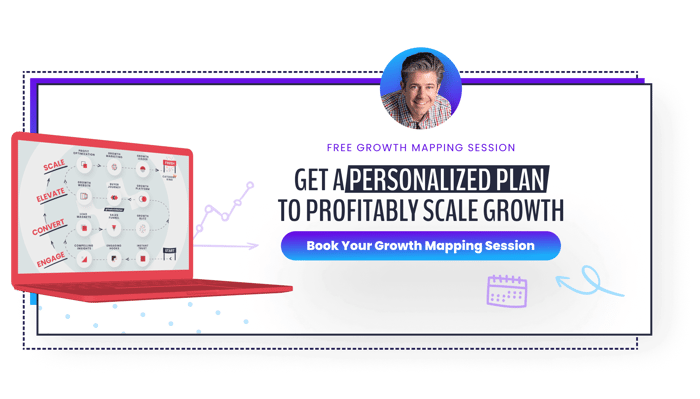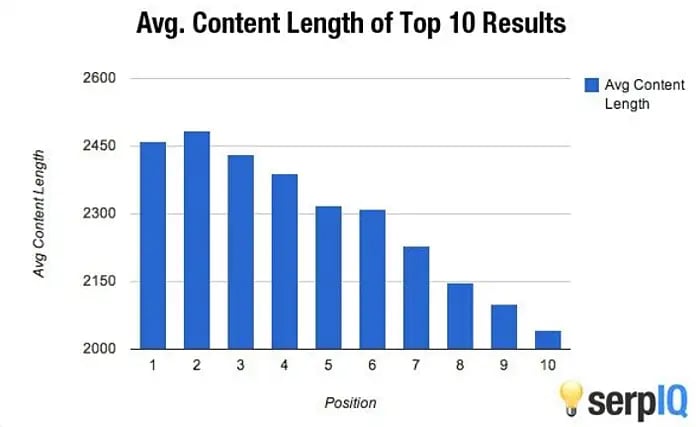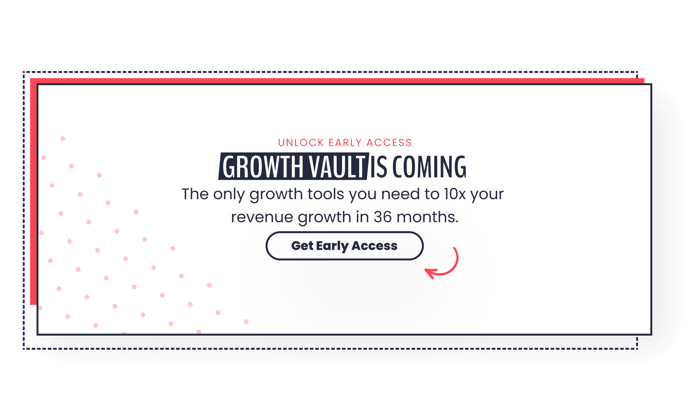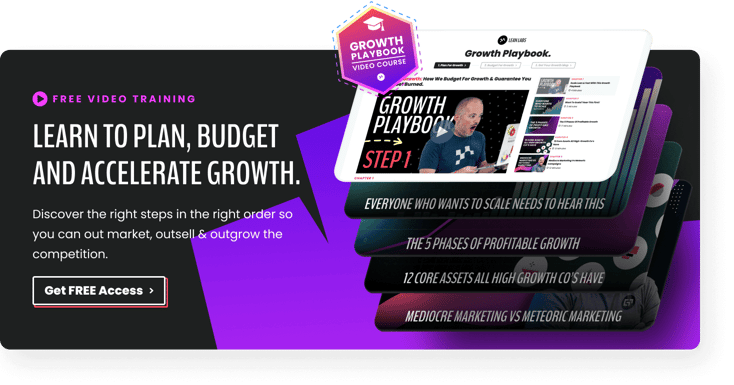Most content online is noise, and there's a terrible reason behind it.
Here's a theory. Imagine you need to cross a heavily snow-covered field. There's a path already carved that goes around the perimeter, ending at your destination. Alternatively, you could break your own trail, heading straight across the field.
Odds are, you're taking the pre-made path, because, even though it's a longer walk, the effort is insignificant compared to that of breaking the trail yourself. Even though the next time you need to cross the field that trail down the middle would be better packed, saving you massive amounts of time over the long term, you'll choose the current easiest option. You've taken the path of least resistance.
It's the same with content marketing. Marketers would rather follow the path around the field because they know it gets them there with minimal effort. But if you could break your own trail, you'd be carving the path everyone else wants to follow, and you'll already be at your destination.
So, that terrible reason most content is noise? It's laziness. And if you can make use of some creative techniques, your content will leave the competition behind.
How to Make Content Stand Out for Increased Consumer Awareness, Conversions, and Credibility
In the metaphor above, carving your own path sounds easy. Unfortunately, it's not. It's going to take some know-how, and a lot of effort before you're able to make a dramatic impact in the content marketing world.
The good news is that you need to start by making your own content as awe-worthy as you can. And that means if you can hunker down and put some work in, your content, whether that's a blog post, a video, or anything else, is going to break from the crowd. It'll set itself apart because you've followed every piece of advice we're about to share with you, and then you'll have the stand out content that others want to emulate.
1. Find Your Unique Spin
If part of your strategy is looking through your competition's articles, seeing what they covered, and then rewriting it in your own words, you're walking a fine line. You can skyscrape content, blowing it up and making it significantly better, or you can take the "rehashing" approach most marketers are taking.
They do it because it's easier and faster to create content, and the topics have been tested, with their results illustrated by their position on the SERPs. Still, there's nothing original about rehashing the same ideas. This doesn't mean to say there's no place for those ideas. They were at one point original, after all. What you need now is to breathe new life into the ideas.
So, how can you do it? Well, you can start by defining what original means for your content.
Say you're writing an article on preparing a three-course meal. What if that meal was created to be vegan? How about carnivore? What if it was prepared by a single father of three? What if it was made using last Tuesday's leftovers?
We've seen plenty of variations of this content, just turn on the food network or look at the cuisine section of Barnes and Noble. But, for the people they're creating for, the content took the exact original approach that appealed to them. I could write this article like every other marketing advice piece, but I'm banking on the fact that you're tired of the dry approach, and you want something you can enjoy reading in the process. I may be full of myself, but writing this feels way more fresh than the usual go around.
So to find the original spin that makes your content pop, take a look at what your audience best engages with, and list all the common denominators. Once you have that, you're able to create the persona for yourself and/or your brand that your viewers appreciate.
You'll be the content marketer your audience deserves, and the one they need right now.
2. Format with the Hook, Story, and Offer
Poorly formatting your content will destroy any chance of standing out.
Look at the previous section. Look at the intro. They all follow a specific structure called the Hook, Story, Offer format. So long as you ensure you're capturing the points seen in the graphic below, you're well on your way to creating epic content.
It's simple but powerful. The first thing someone sees is your title. If they're in your content, it's because they want you to deliver on that promise.
Next, they're going to scan your blog posts and see if the headers all seem like they'd deliver something worthwhile on the topic. In fact, they may even stop to look at an appealing section in the mix.
Now, a good hook will entice the user to scroll back to the top and start reading your intro.
Easy, right? Well, it's surprisingly overlooked. Rather than creating a captivating first sentence, some marketers will jump right into the material, trusting they've already got their viewers attention. That's something that should never be assumed.
So once the hook has been established, the story works to connect it with the offer. It can be an actual story, a tale, or even the story you expect your viewer to be going through. So long as whatever metaphor you use relates back to the main point, you're golden.
The offer section will differ based on its location in the piece. In the intro, you want the offer to tease the information you'll provide. You want just enough mystery that they keep reading. In the body of your content, you want to keep a laser focus on the topic to hold their attention and deliver on the promise on the title. This is how you earn. This is how you earn the engagement that drives shares, conversions, and brand loyalty.
If you can capture their attention, keep them engaged, and deliver on the specific reason they're with you, your content will have a permanent spotlight on it.
3. Make The Content Actionable
Can you imagine if Tony Robbins gave no actionable tips? No one would attend his seminars. They're paying top-dollar for that hard-hitting wisdom he slings around the room.
Your content should be treated the same way. Readers aren't coming to your material to loiter. They're there because they want a solution and you've been positioned to deliver. Actionable content drives engagement and keeps your audience coming back for more.
You want to present and explain the steps clearly, which will make your content actionable for the reader.
For example, if you're reading a very technical article, you're probably hoping someone will walk you through, step by step, how to build your contraption. You care so much about each step because if one piece is out of place, it could cost a finger, or worse, your fellow men would pick on your construction skills.
Something like an article on making content that stands out, for example, is different. Rather than hearing the exact steps, going line by line, you want to hear how each task will help, and what the benefits are. Telling you "write original content" is a waste of time. Giving you examples of ways you give your content a fresh twist while showing readers engage better with those ideas is not.
And don't get me wrong. Sometimes, it can be extremely effective to be direct with something. But for the most part, showing people how to do something is far more effective because it creates an image that hardens the lesson.
4. Provide More than an Answer
They searched, they found, they're waiting.
It's on you to deliver. And if you've actually read the previous sections, this one should be easy. You're already framing with the Hook, Story, Offer format, and you've got your own twist on the material, so you need to provide in addition to those actionable tips.
If you want your content to truly engage with the reader, keep it specific to the problem. Read most 2,000 plus word posts, and you'll see that many marketers focus on word count over quality. You can watch their content trail back and forth, going off on more tangents than your Uncle Ted after a few drinks on Turkey Day. Most marketers miss the point with longer content, thinking that more words equals a better answer.
That image looks good, but I'm going to let you in on a secret: if you can deliver the answer in 400 words with clarity, it's going to be significantly stronger than a 2,000-word article that side-steps even once. Before starting a piece of content, ask yourself how long it needs to be to effectively cover the topic.
This process is the same with video content, audio, social posts, and anything else you can imagine. If you can get the same message across with fewer words, it's going to be more powerful.
But length isn't the only critical piece. Relevance will keep your viewer focused. This means the content is relevant to the solution, it's relevant to the reader's situation, and it's relevant to the industry.
The first is self-explanatory. If you're not answering the actual question, the viewer is going to find someone else that will.
Second, if the reader is researching because their cat is sick, making jokes will not help your case. Your writing needs to be on the same level the readers at, just as if you were talking face to face. This level may change depending on where the content sits in the buyer's journey, but it needs to appeal to the state they're arriving in.
Finally, while it's generally safe to within the industry norms, because that's where you'll meet most of your customers, don't be afraid to take chances. Like we've already discussed, many content marketers are lazy, and here, safety equates to laziness.
Look at Gary Vaynerchuk. He started his wine dynasty by completely derailing what was expected by the rest of the industry. Look at Marcus Sheridan. Pool installation companies didn't write content to answer questions.
Newsflash: you need to leave your comfort zone, and find that originality you have to engage your audience without losing relevance within the industry.
5. Use Multimedia to Your Benefit
Sometimes, no image is better than a bad one. Yes, it's nice to break up the monotony of the page, but when I see a graphic that has no purpose, I just get frustrated. I grow disappointed because the author didn't care enough to put something worthwhile into the content.
Video has an excellent opportunity for multimedia, even if it is a bit more challenging. Adding subtitles or images within the video goes a long way in making the content more appealing. The subtitles even work great for your audience who's viewing from the bathroom on their lunch break and want some anonymity.
If you have graphs, use them. If you don't, make some.
Now here comes the fun part. You can incorporate different mediums into each post to increase your content's appeal. For example, say you have a blog post that you've discussed on multiple platforms, you could link an audio file of a podcast or just reading the article to the top of the post. You could add a relevant video you've created to the same post. The possibilities are endless if you're willing to get creative.
Creating Content That Breaks Away from the Crowd
You now have everything you need to break away from the crowd this year. Your content marketing will probably be better too.
There are a few other things you can do to make your content more remarkable, as well. First, refresh content whenever it's necessary. Some of your best blog posts may not fare well as age sets in. Still, if you don't want to lose the positioning it's built up with the search engines, just give it a little love and freshen it up. It'll take that single piece of content much farther.
But if you really want to make a difference, master the art of repurposing content. If you can take that one knock-out article you wrote and learn to turn it into ten more, and a video, and social posts, and infographics, and a podcast...you get the idea. This one skill should be at the top of you "to do" list. With it, and the rest of the points in this article, you're sure to have content that stands out.






.png?width=400&height=400&name=People%20who%20like%20useful%20images%20(1).png)





